Not all bathrooms allow you to install a bidet, and the level of comfort after the corresponding manipulations is quite different. But for those who do not have the space to install an additional bowl, there are several different ways to make a hygienic shower for the toilet. Some methods require large material costs, others are quite affordable for families with average income.
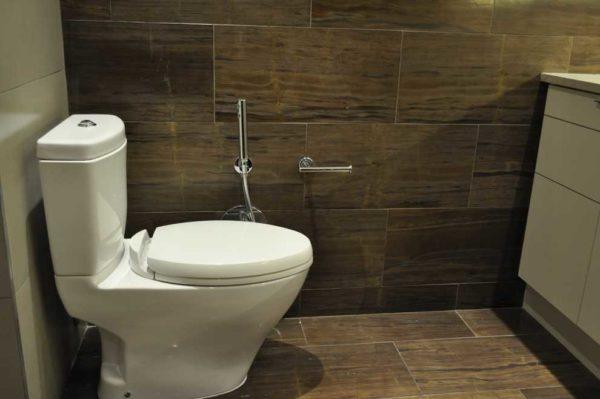
Contenu de l'article
What the market can offer
To have a bidet in the bathroom is certainly convenient, but not in every apartment it can be installed. But this does not mean that a small bathroom is a reason to abandon such a procedure. There are several different ways to organize the conditions for this procedure:
- A toilet bowl with a bidet function. Two devices are combined in one body. To carry out a hygienic procedure, you need to press the appropriate buttons, the nozzles will come out. Then the mechanism of operation is different – somewhere there are buttons, somewhere touch control and sensors that track the presence of a person. Water can be supplied to the built-in faucet (cold and hot), and can be heated in the internal flow water heater. In general, a very convenient and useful device with a high level of comfort. The only thing that does not please – high prices for this miracle of sanitary ware (from 60-80 thousand for simple models to 250 thousand for “tricked out”.
- The lid for the toilet bowl. Organize a hygienic shower for the toilet bowl can be even with the help of a lid. Of course, this is not an ordinary lid. It has an inlet for connecting water, a built-in water heater and a retractable nozzle. On the side of the lid there is a control panel, where you set the desired temperature, turn on/off the water supply. Unfortunately, the cost of these devices is also not small – about 60-100 thousand rubles.
- Faucets for hygienic shower. The most low-budget way to make a hygienic shower in the toilet is to install a special mixer, to which a flexible hose with a nozzle at the end is connected. The water temperature is adjusted on the faucet, the hose is supplied after pressing the lever-button.
All the methods described above are good. But it is the mixer for hygienic shower – the most attractive solution. There are models for the installation of which does not require repairs and complex manipulations. You can connect the device to the existing system, and you can put a mixer on the sink with a special outlet, to which you can connect the hygienic shower head. About the varieties of these devices and the peculiarities of their connection and we will talk further.
Pros and cons compared to a bidet
About what is more convenient – a pair of toilet bowl + bidet or hygienic shower for the toilet bowl, there is no reason to argue. Everyone decides for himself. Let’s briefly consider the main pros and cons of both devices:
- To install two bowls – bidet and toilet bowl requires more space. With this argument you can not argue, although not everyone has the need to save space.
- When performing the procedure of intimate hygiene with the help of a hose and a watering can, you do not need to go from one sanitary device to another. Also an obvious fact.
- When using a shower, it is fixed somewhere on the wall. At the end of use, it may “drip” from it for a while – residual water will be drained. This is mainly a theoretical possibility, since in practice, with a properly working switch, there are no wet spots under the showerhead.
- When using a bidet, it is very difficult to forget to close the water. If you have a wall-mounted version of the hygienic shower, it is easy to do: there is a double shut-off system – a button/lever on the showerhead and a faucet on the mixer. It is not allowed to leave the tap open after the procedure. In this case, the flexible hose is under constant pressure, and it is not designed for this, so it can burst. The situation is different when using the faucet on the sink – there you can see that water is pouring out.
- Use a flexible hose can be used not only for its direct purpose, but also for other needs. For example, it is convenient to draw water, wash the toilet or cat/dog bowls and litter trays.
Strange as it may seem, it is the latter fact that is often decisive – an additional bonus in the form of extended functionality is always pleasant. To the pluses of showers it is worth attributing still the possibility of organization for a relatively small amount of money. But this is a speech about devices with a mixer.
Types of hygienic showers with a mixer
According to the method of installation there are two types of faucets for hygienic showers with faucets:
- for the sink;
- wall-mounted
- indoor installation
- external installation.
Each of these options has pros and cons.
On the sink
If you put the hygienic shower on the sink, the installation becomes much easier. All that is needed in this case is to replace the mixer. It provides a separate outlet, to which a flexible hose with a showerhead is connected. All that will be necessary is to install the holder on the wall. The location of the sink in this case is also important. Ideally, if you can reach the faucet without getting up. Since such models have a peculiarity of operation is as follows: first the faucet on the washbasin is turned on, the water temperature is set on it. Water, of course, flows into the sink. When you press the key on the shower, the faucet is blocked, water flows through the watering can. As soon as the key is released, the water flows back into the sink. This is the principle of operation.
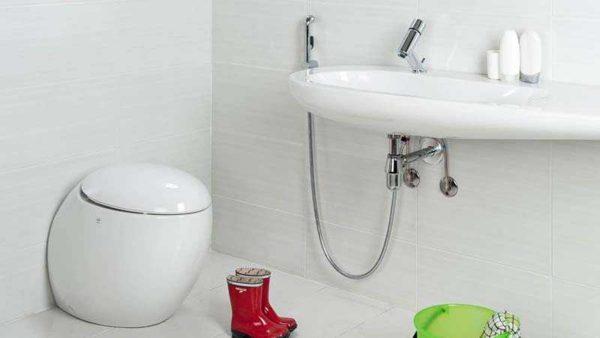
Wall-mounted flush-mounted
If you chose the wall-mounted option, the complexity of installation depends on how you plan to install it. Often in the bathroom or toilet there is a niche in which all communications are hidden. Often it is behind the toilet bowl or somewhere nearby. In this case, you can connect the connection there, and install the mixer on the panel or think of another option.
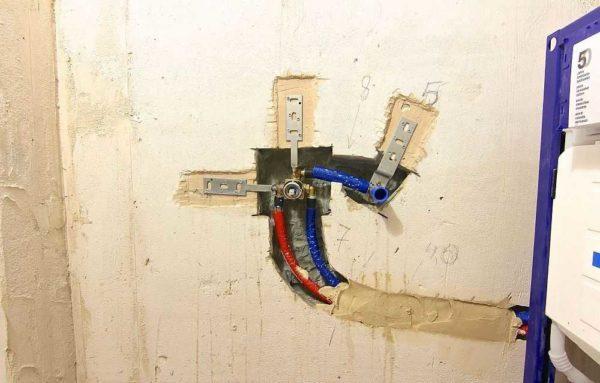
The standard installation involves drilling through the walls, laying the hot and cold water supply pipes in the hollows and, at the final stage, installing the mixer itself.
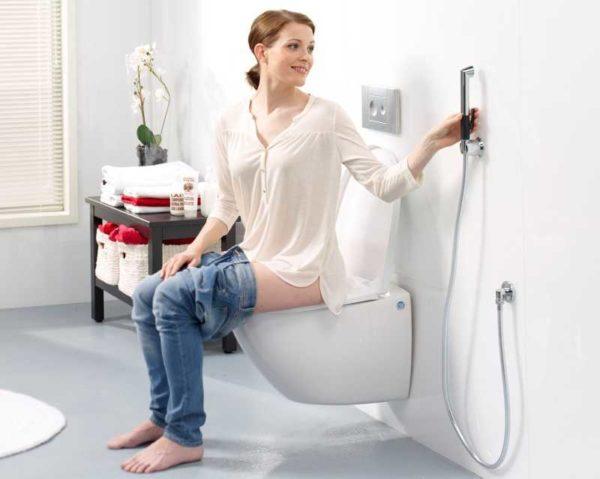
Wall-mounted open-mounted (with thermostat).
This is not all varieties. There is also a hygienic shower with a faucet, which is connected only to cold water. This does not mean that the procedures are carried out with cold water. Simply in the body there is a flowing electric heater. Such models are only externally mounted, since the thermostat is not walled in. Connection to water – with a flexible hose, the device itself is attached to the wall with dowels or other suitable fasteners.
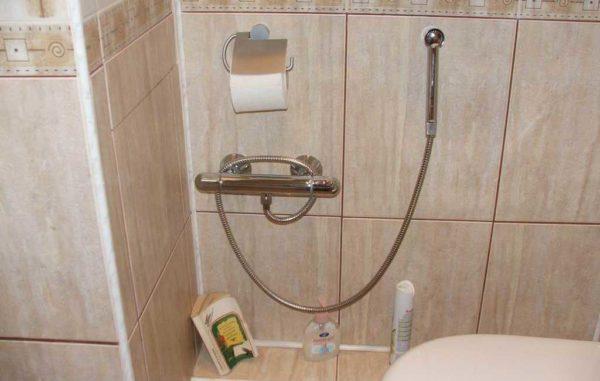
The temperature is set on the regulator, it is precisely maintained. Only immediately after turning it on, you need to wait for a while – a few seconds, while the heating element heats up. A very good option for those who do not have hot water in the toilet (or at all). Yes, do not forget that such models require connection to the power grid.
An interesting variant of installation without drilling in the following video – the supply line is laid on top of the walls, but closed with a box. It also has a holder for the watering can. It is worth paying attention to those who do not expect to renovate the toilet or bathroom.
Where to install
The height of the installation of the hygienic shower for the toilet bowl is chosen almost arbitrarily. The only requirement is that the faucet must be installed above the toilet bowl. There are no other restrictions.
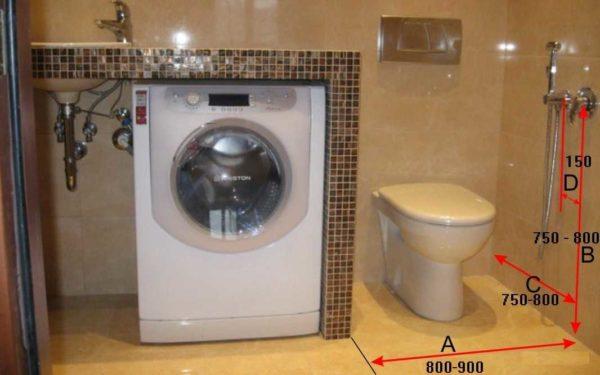
The place of installation is absolutely arbitrary, the main criterion is convenience of use, which is hardly achievable in small bathrooms. Therefore, we recommend, before making a final decision, to think everything through and do all the actions with the shower head. Only in this way you can be sure that it will be really convenient to use.
Particularités de l'installation
Specifically say how to install a hygienic shower for the toilet can only be on the spot. Too many different nuances, which are simply impossible to take into account. The principle of connection is simple: you supply cold and hot water to the corresponding inputs. That’s all. And how to do it, pipes or flexible supply – the choice is yours. Of course, pipes are more reliable, but quality flexible hoses in a good braid can serve for years.
There is only one nuance to remember. When connecting the hygienic shower to hot and cold water (centralized system) necessarily put ball valves and check valves. Taps are put almost always, and check valves are often forgotten.
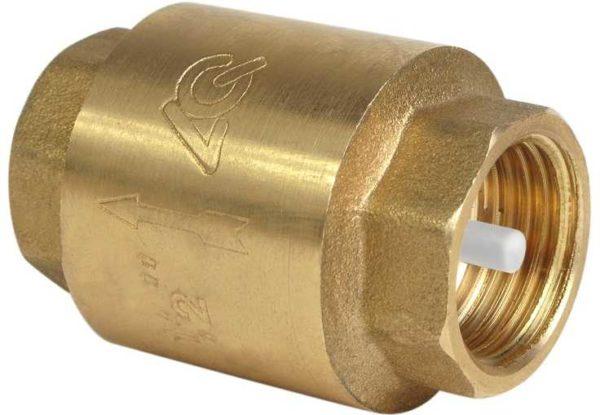
They are needed to ensure that the water from the “cold” riser is not swept into the hot and vice versa. Usually it happens just the opposite – you open the cold water, and from there pours boiling water, but there are also reverse cases – hot water periodically becomes not hot at all. This is all because someone on your riser did not put a check valve when connecting the hygienic shower on the toilet. The faucet is opened, the shower is not used yet and through the open faucet water from one riser is mixed into the other. Which water goes where depends on where the pressure is higher. Usually higher in hot risers (almost twice), so such cases are more common. But it is also possible to mix in cold water. In general, do not forget to put shut-off valves. They cost pennies (compared to the cost of equipment), and prevent unpleasant situations and proceedings with the maintenance company and “satisfied” neighbors.

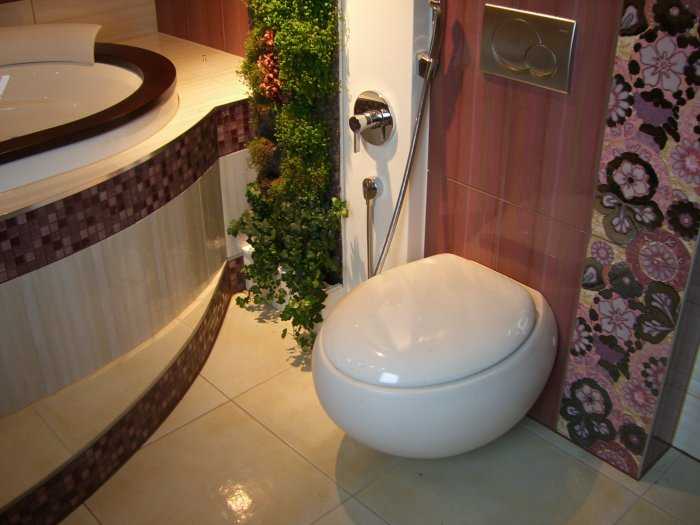
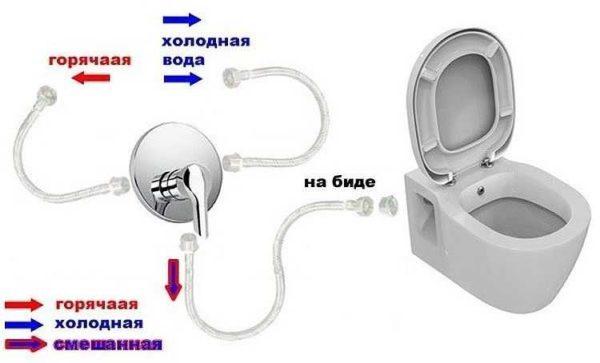
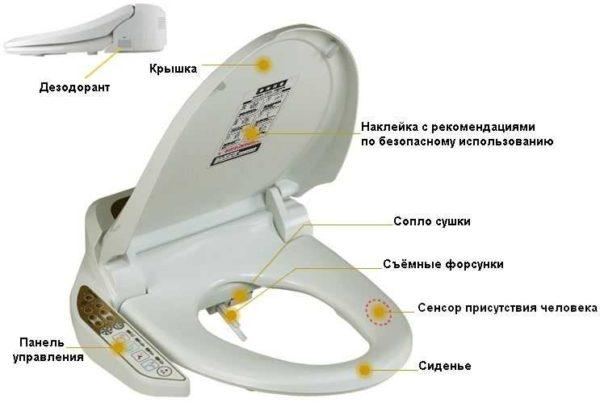
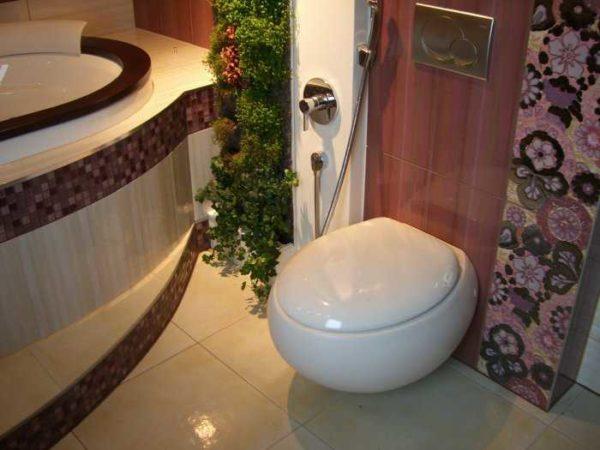
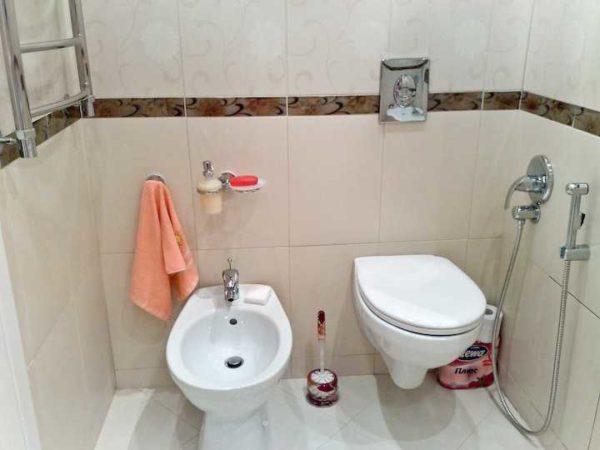

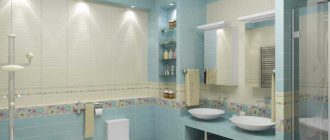
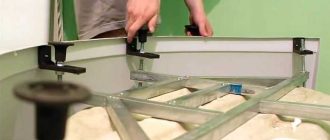

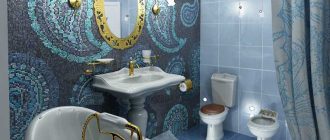
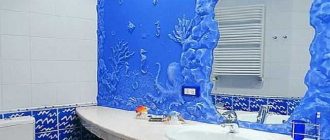
Hey, everyone! I totally get the struggle of keeping showers clean. A quick tip? Squeegee the walls after every use – it seriously cuts down on soap scum and mildew. Trust me, a little effort goes a long way! Let’s keep our showers fresh and inviting!
Hey! Totally agree! I started squeegeeing my shower after each use and it’s a game changer. Used to battle mildew all the time. Now, it’s like a whole new world! A small effort that makes such a difference. Let’s keep those showers looking sharp!
Hey, I totally vibe with this shower routine! I remember when I started using a shower curtain liner to keep things clean—it made a world of difference. Keeping the space tidy and fresh really changes the shower game. Appreciate the tips shared here!
Absolutely! I feel you on that! I switched to a liner too, and it’s a game changer. It keeps the mold at bay and the whole vibe fresh. Plus, less scrubbing later! Love how little changes can make a big impact. Thanks for sharing your thoughts!
Hey folks! You know, I tried out this new shower routine last week, and wow, what a game-changer! Just a quick rinse before the soap and using a squeegee after really keeps things fresh. Trust me, a clean shower makes all the difference—try it out!